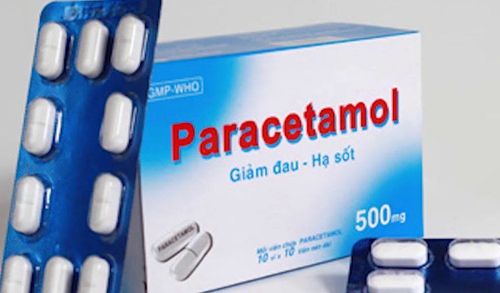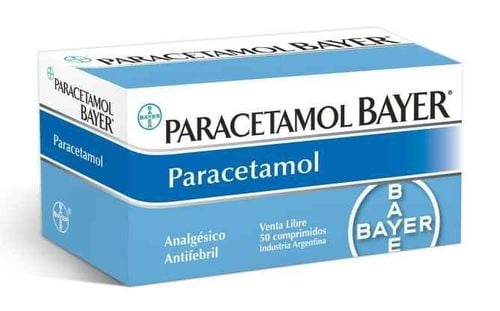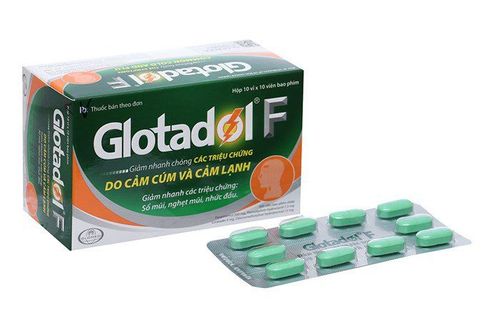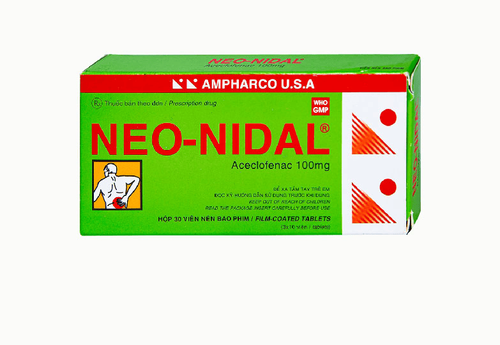This is an automatically translated article.
Repamax P medicine has the main active ingredient is Paracetamol with the content of 500mg and other excipients in sufficient quantity. Repamax P belongs to the group of pain relievers, antipyretics, non-steroidal anti-inflammatory drugs.
1. What is Repamax P?
What is Repamax P drug? Repamax P drug has the main active ingredient Paracetamol with the content of 500mg and other excipients in sufficient quantity. Repamax P belongs to the group of pain relievers, antipyretics, non-steroidal anti-inflammatory drugs.
Repamax P is made in the form of tablets suitable for direct oral use. Packing is a bottle of 100 tablets, 200 tablets or 500 pills.
1.1. Pharmacodynamics of the main active ingredient Paracetamol Active ingredient Paracetamol is a non-steroidal antipyretic analgesic. Paracetamol, also known as Acetaminophen or N - acetyl - p - aminophenol, is an active metabolite of phenacetin, an effective pain reliever and fever reducer that can be used as an alternative to aspirin. However, unlike aspirin, the active ingredient Paracetamol is not effective in treating inflammation. At equal doses in grams, the active ingredient Paracetamol has analgesic and antipyretic effects similar to aspirin. The active ingredient Paracetamol with therapeutic doses has little impact on the cardiovascular and respiratory systems, does not change the acid-base balance, does not cause irritation, scratches or stomach bleeding like when using Salicylates. The reason is that the active ingredient Paracetamol has no effect on systemic cyclooxygenase but only affects cyclooxygenase/prostaglandin of the central nervous system. At the same time, the active ingredient Paracetamol has no effect on platelets or bleeding time. 1.2. Effects of the main active ingredient Paracetamol Paracetamol lowers body temperature in febrile patients, but rarely lowers body temperature in normal people. Drugs acting on the hypothalamus cause hypothermia, hyperthermia caused by vasodilation and increased peripheral blood flow.
2. What disease is Repamax P used to treat?
Repamax P contains Paracetamol which is an analgesic and antipyretic agent. The drug is effective in the treatment of specific conditions as follows:
Treatment of mild to moderate pain symptoms including: Headache, migraine, muscle aches, menstrual pain, sore throat , musculoskeletal pain, fever and pain after vaccination, pain after tooth extraction or after dental procedures, toothache, pain from osteoarthritis. Antipyretic treatment.
3. Usage and dosage of Repamax P
3.1. How to use Repamax P: Repamax P is made in the form of tablets, suitable for oral use.
3.2. Subjects using the drug Information on subjects using Repamax P as prescribed by the treating doctor
3.3. Dosage of Repamax P For adults (including the elderly) and children from 12 years of age and older: The therapeutic dose is 500mg to 1g paracetamol (1-2 tablets/time), every 4-6 hours necessary. Maximum daily dose: 4000mg. Do not exceed the indicated dose. Do not use Repamax P together with other medicines containing paracetamol. The interval between two therapeutic doses should be at least 4 hours. For children 6 to 11 years of age: Use a therapeutic dose of 250-500mg every 4 to 6 hours as needed. Maximum daily dose: 60 mg/kg body weight in divided doses, each time 10-15 mg/kg body weight used for 24 hours. No overdose specified. Do not use in combination with other drugs containing the active ingredient Paracetamol. Do not take more than 4 doses in a 24 hour period. The interval between two therapeutic doses should be at least 4 hours. For children under 6 years of age: Repamax P is not recommended for children under 6 years of age. 3.4. Treatment of Overdose Repamax P Treatment dose-dependent hepatic necrosis is the most serious acute toxic effect of overdose and can be life-threatening. Nausea, abdominal pain often occur when taking toxic doses of the drug Repamax P. Methemoglobinemia leading to cyanosis of the skin, mucous membranes, and nails is a hallmark. Treatment: People who overdose on drugs should be transported to the nearest hospital or medical facility immediately. The doctor will prescribe gastric lavage to immediately eliminate the drug or use the antidote N-acetylcysteine intravenously (or oral if there is no injection form).
4. Undesirable effects of the drug Repamax P
Undesirable effects of Repamax P may occur as follows:
Repamax P is well tolerated, side effects are usually mild and reversible after discontinuation of the drug. In a small number of isolated cases, the main active ingredient Paracetamol has caused a decrease in neutrophil counts, a decrease in platelet counts, and a decrease in pancytopenia. Undesirable effects on the dermatological system are rarely rash or itching during treatment with this drug.
5. Drug interactions Repamax P
Excessive and long-term alcohol consumption can increase the risk of the active ingredient Paracetamol causing liver toxicity. Long-term use of high doses of Repamax P slightly increases the anticoagulant effect of coumarin and indandion derivatives. When using Repamax P together with anticonvulsant drugs (gdm phenytoin, barbiturates, carbamazepine) causing enzyme induction in microsomes of hepatocytes, it is possible to increase the hepatotoxicity of paracetamol due to increased drug metabolism. substances that are toxic to the liver. In addition, concomitant use of Isoniazid with Repamax P may also lead to an increased risk of hepatotoxicity.
Other interactions: the main active ingredient Paracetamol reduces the absorption of iron salts.
6. Some notes when using Repamax P
6.1. Contraindications of the drug Repamax P Those who are sensitive or hypersensitive to the main active ingredient is Paracetamol. People with a history of anemia from before using this drug. People with a deficiency of the metabolic enzyme glucose-6-phosphate dehydrogenase. In case of people with advanced hepatitis or severe kidney failure. 6.2. General precautions when using Repamax P Repamax P use in the elderly: Special care should be taken in the elderly to reduce the risk of gastrointestinal disorders, because physiologically, these Elderly people are often more sensitive to Repamax P than children. Use in children: The safety of Repamax P has not been established for infants with low birth weight, infants, nursing infants and children. Use in pregnancy: caution in pregnant women. You should only use Repamax P when absolutely necessary, after being considered by the treating doctor about the benefit to the mother and the possible risk to the fetus. Use of the drug in breastfeeding women: No undesirable effects have been observed in breastfed infants. Use for drivers and machine operators: Currently, there is no specific information on the effects of Repamax P in this group of people. You need to clearly identify the unwanted effects of the drug on your health before performing tasks that require high concentration such as driving or operating machinery. Above is all information about the drug Repamax P, patients need to carefully read the instructions for use, consult a doctor / pharmacist before using. Absolutely do not arbitrarily buy Repamax P to treat diseases at home, because there may be unwanted side effects on health.
Follow Vinmec International General Hospital website to get more health, nutrition and beauty information to protect the health of yourself and your loved ones in your family.













